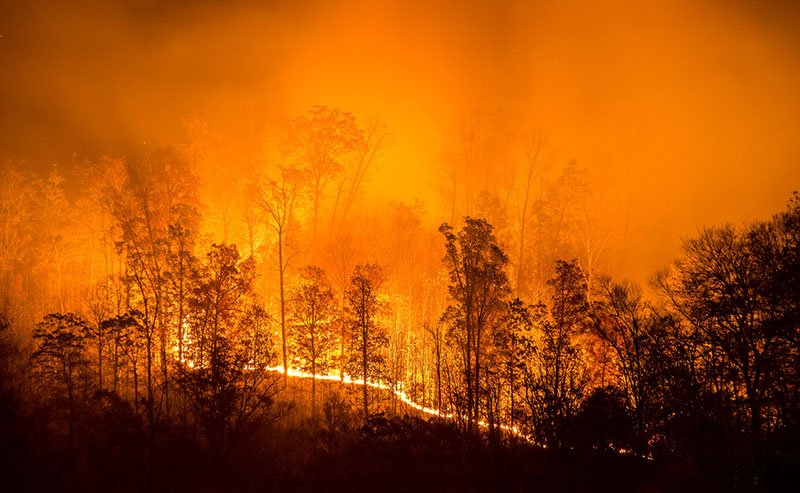Did you know that there are currently 72 large wildfires burning across the U.S., and that of them only two are 100% contained? Among the 14 states currently reporting large fires, which have now consumed more than 754,000 acres, are Alaska with 15, Oregon with 13, Utah with 7, Colorado with 6, and Washington with 4. If you think these numbers are staggering, and that the risk of wildfires is on the rise, you’re absolutely right.
Take California for example, where last year’s wildfire season, as reported by The Washington Post, caused historic levels of death and destruction, burning 1.2 million acres of land; destroying more than 10,800 structures; and killing at least 46 people. Today there are four large fires burning in the Golden State, including the Ferguson Fire in the Sierra Nevada mountains. Now under Unified Command with the U.S. Forest Service, CAL FIRE, and the Mariposa County Sheriff’s Office, the Ferguson Fire has scorched nearly 34,000 acres, and continues to advance toward Yosemite National Park. Mandatory evacuation orders have been issued throughout the area, and residents fear the worst as extremely dry weather conditions continue to fuel the flames.
And, they do so for good reason. According to recent research presented by Smithsonian.com, fire season length has increased by nearly 20 percent on average in the past 35 years, and the global area now impacted by long fire seasons has doubled.
So what does this mean to you? On one hand, it means that if you live or work in areas where the threat of wildfires exist, you’re clearly at some level of risk. On the other hand, it means you if you are impacted by wildfires, may qualify for new Hazard Mitigation Grant Program (HMGP) Post Fire funding assistance. HMGP Post Fire is an expedited and flexible means for communities to recover and protect themselves from wildfires or other natural disasters.
According to FEMA, HMGP Post Fire funding assistance is a temporary portion of HMA’s larger Hazard Mitigation Grant Program. One main difference is that HMGP requires a Presidential declared disaster to apply for funding assistance, but HMGP Post Fire requires the more quickly obtained federal Fire Mitigation Assistance declaration. This accelerates funding awards and quickly allows wildfire-affected communities to begin recovering.
Another feature of HMGP Post Fire is that if an affected area recovers before its grant is received, the state or other funding recipients may retain the funds and use them for any mitigation project types, including future wildfire projects such as early warning systems.
As evidenced by past (and current) events, wildfires can destroy homes, businesses, infrastructure, natural resources, and agriculture. They can also exacerbate secondary hazards, leaving areas prone to floods, erosion and dangerous mudflows for years and years to come. Know your risk, plan ahead, and learn more about the FEMA funding available for your community’s recovery and protection.






